- Published on
The Ultimate Guide to Terraforming
- Authors

- Name
- Tony Geiser
The Ultimate Guide to Terraforming
So, You've Decided to Play God: A Beginner's Guide to Planetary Renovation
Let's start with the dream, the one that's launched a thousand starships in our collective imagination: stepping off a ramp onto a new world, helmet off, and taking a deep, satisfying breath of fresh, alien air. It's a lovely thought. It's also a complete fantasy.
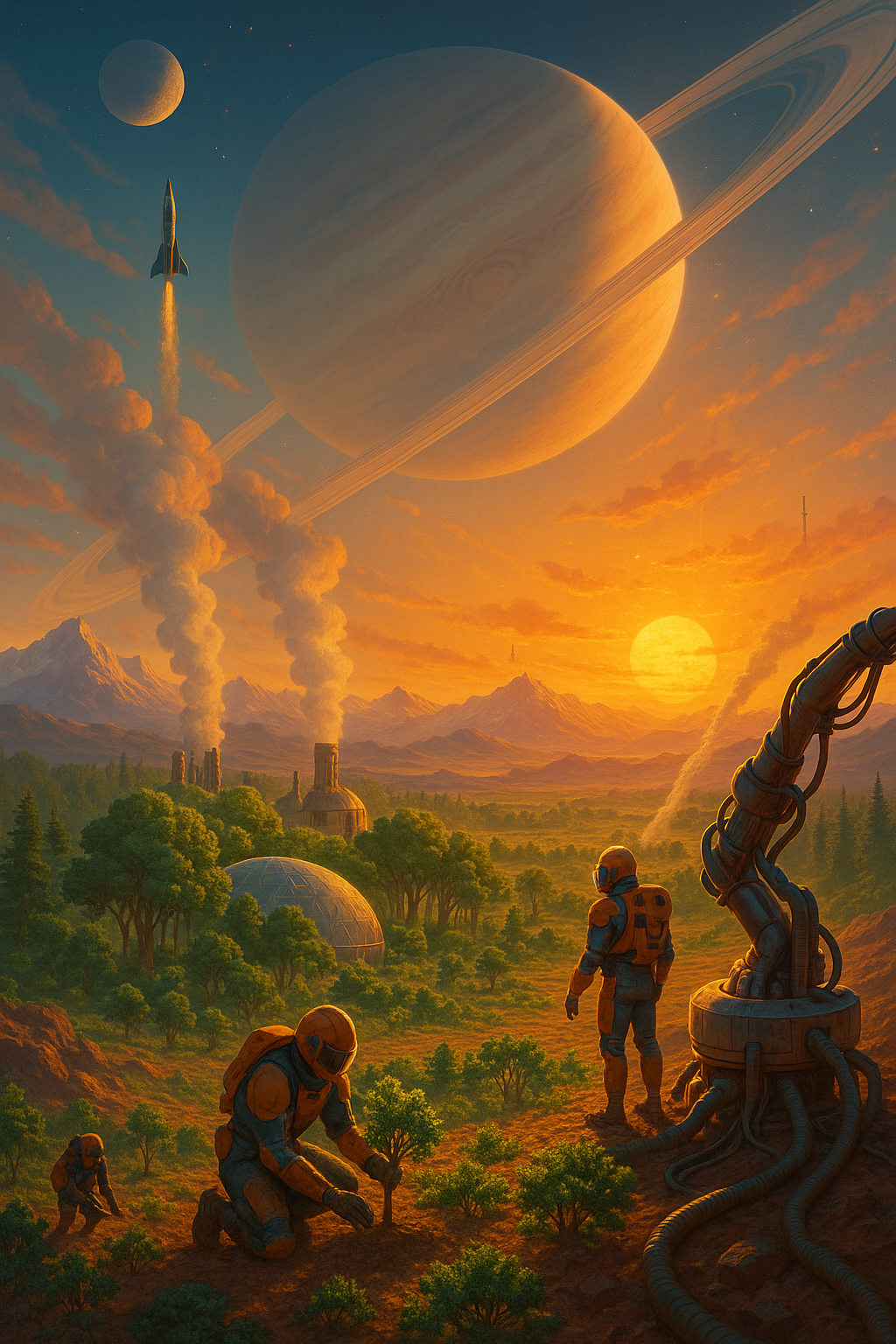
The reality of terraforming, literally "Earth-shaping" , is less about romantic pioneering and more about planetary-scale engineering so audacious it makes the Great Pyramids look like a weekend LEGO project.
This isn't just planting a few trees; it's a process of planetary ecosynthesis , the deliberate and violent modification of a world's temperature, atmosphere, and ecology to make it survivable for our fragile, water-filled bodies.
The term itself was born in the pulpy pages of a 1942 science fiction story by Jack Williamson, but it didn't stay fictional for long. By the 1960s, at the height of the space race, luminaries like Carl Sagan were seriously sketching out how we might give our celestial neighbors an extreme makeover.
The science is, at this point, entirely theoretical. But the conversation is real, and it reveals a species with ambitions that are, frankly, terrifying. The goal isn't just a planetary HVAC system; it's to create a stable, self-regulating biosphere that won't immediately try to kill you if the power goes out.
So, if you're ready to graduate from managing your sourdough starter to managing a planet, let's look at the options.
Real Estate Nightmares: Picking Your Fixer-Upper
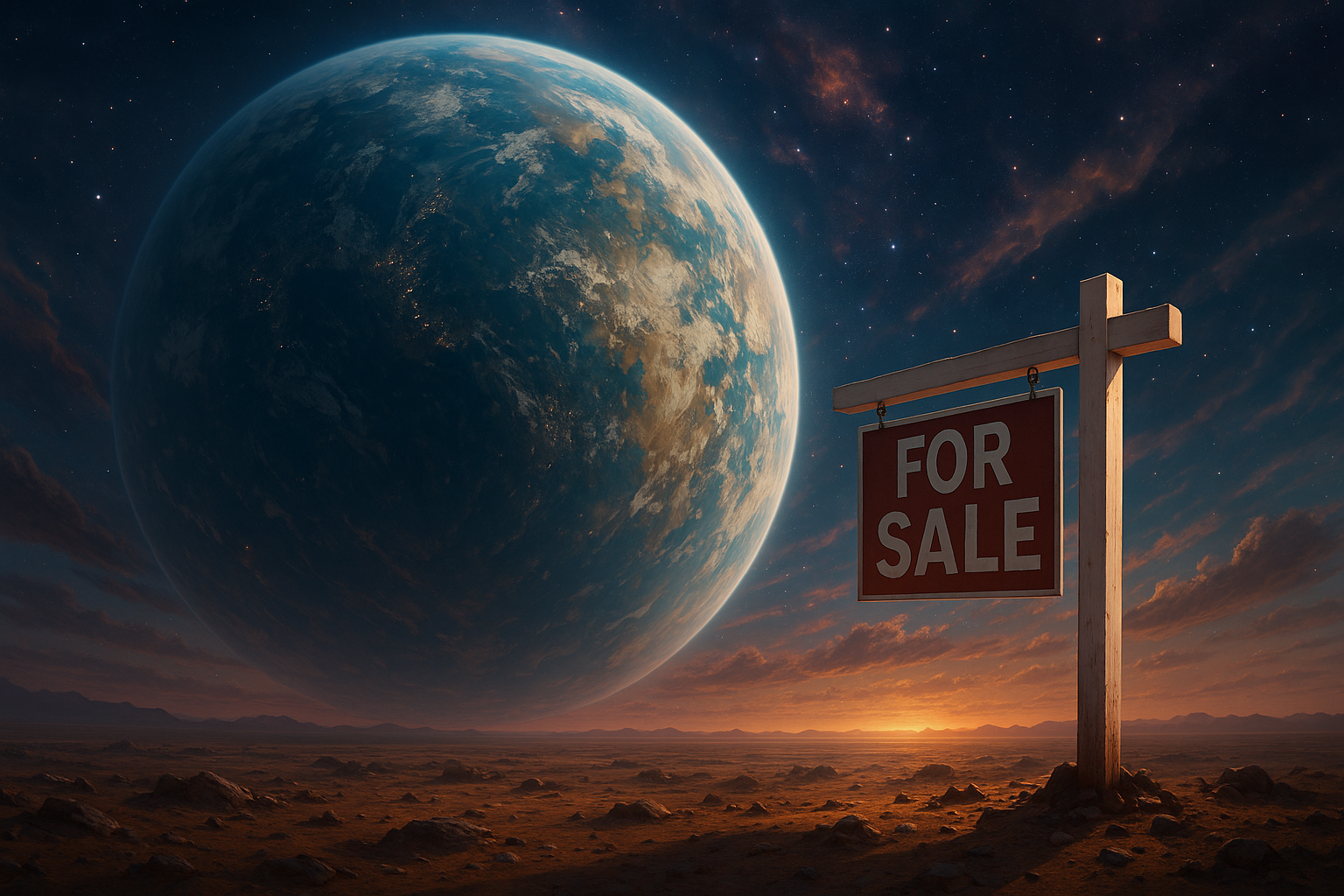
Choosing a planet to terraform is like browsing a galactic Zillow where every listing is a toxic waste dump, a frozen hellscape, or both. The basic requirements for a habitable planet, what astrobiologists call the "habitable zone", are the presence of liquid water, an energy source, and essential nutrients.
This so-called "Goldilocks Zone" is the region around a star where conditions are not too hot and not too cold for liquid water to exist on a planet's surface. But as we're about to see, being in the right neighborhood doesn't guarantee the property is move-in ready.
Our solar system offers two primary candidates, each a unique flavor of catastrophe.
Candidate A: Mars, The Frozen, Irradiated Desert Next Door
On paper, Mars looks like a steal. It's relatively close, its day is a familiar 24.5 hours long , and we have heaps of evidence that it once had a thicker atmosphere and flowing water. It has "good bones."
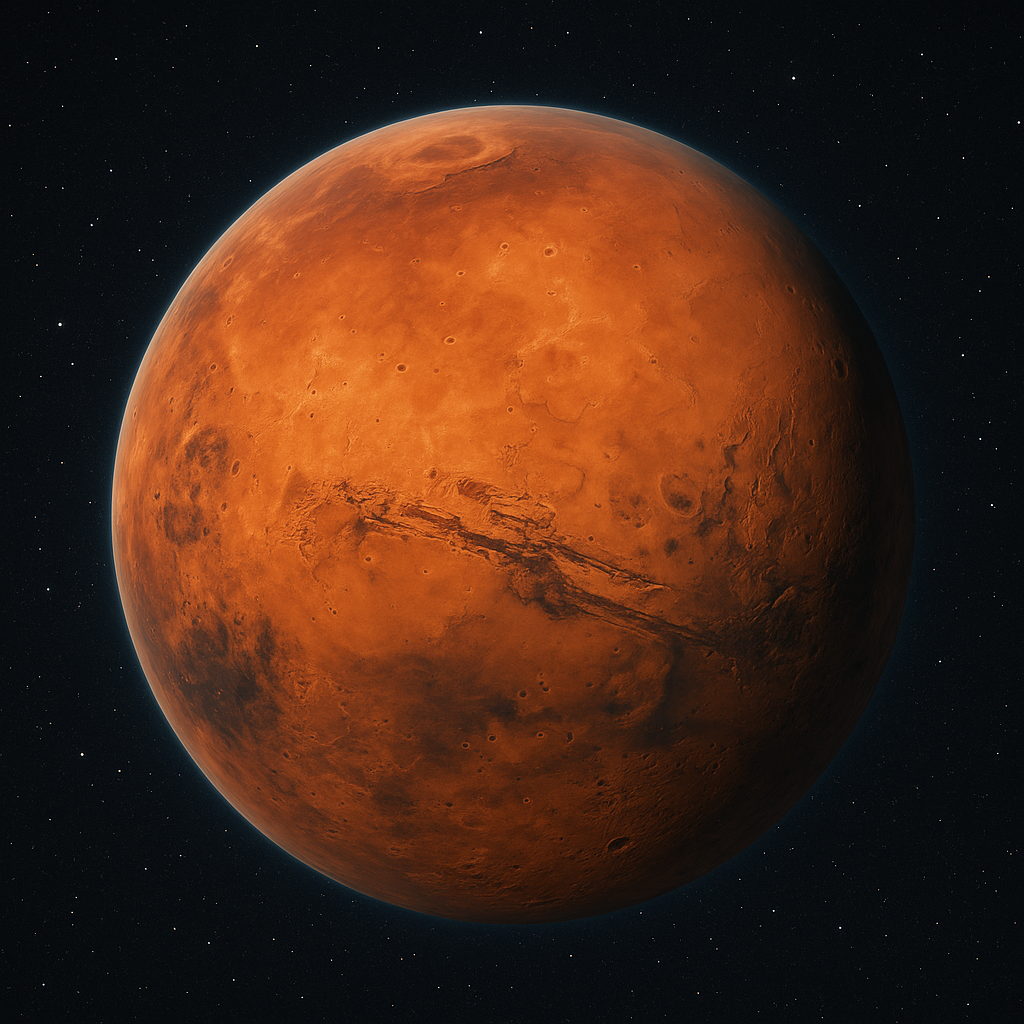
Unfortunately, those bones have been flash-frozen, irradiated, and shattered. The current atmosphere is a pathetic 1% of Earth's pressure, so thin that your blood would literally boil if you stepped outside without a pressure suit. This near-vacuum is mostly carbon dioxide (CO2), but here's the kicker: a 2018 NASA-backed study concluded that Mars simply doesn't have enough accessible CO2 left to kick-start a meaningful greenhouse effect.
Most of it has been stripped away by solar wind or is locked away in minerals, inaccessible with any technology we currently possess.
Add to that an average temperature of a brisk -60°C (-80°F) and a surface constantly bombarded by cosmic radiation thanks to its lack of a global magnetic field, and you have a planet that is less a "fixer-upper" and more a "condemned property".
Candidate B: Venus, Earth's Evil Twin, a Literal Hellscape
Then there's Venus. Our sister planet! So similar in size and gravity. What could possibly be wrong? Everything. Everything is wrong.
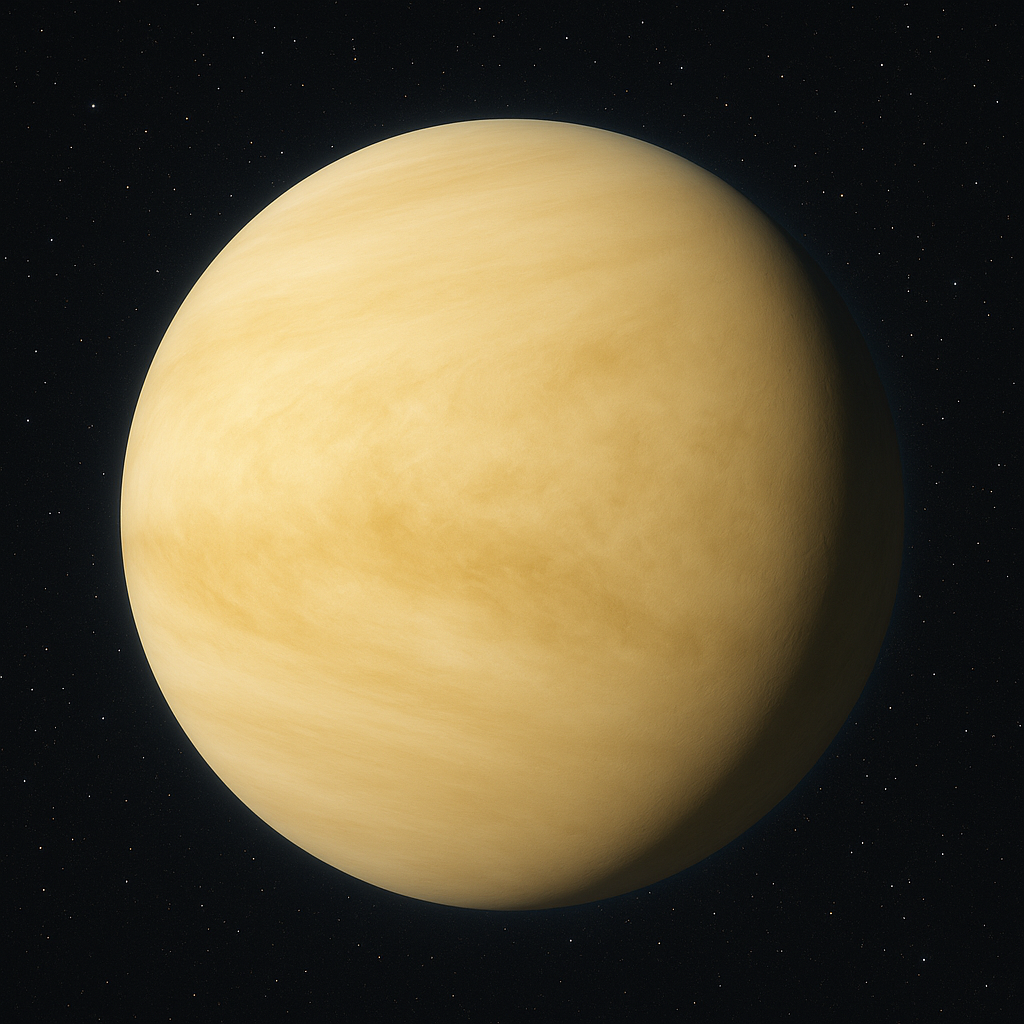
Venus is what happens when a greenhouse effect goes through a truly dramatic goth phase. Its atmosphere is a suffocating blanket of CO2, 92 times thicker than Earth's, laced with clouds of delightful sulfuric acid. This has cranked the surface temperature to a lead-melting 462°C (864°F).
It also rotates with all the urgency of a Monday morning, meaning a single Venusian day lasts 243 Earth days, creating a two-month-long scorcher of a day followed by a two-month-long, profoundly dark night.
This isn't a fixer-upper; it's a tear-down. You have to demolish the entire planet's climate before you can even lay a new foundation.
The fundamental engineering challenge for these two worlds is a perfect mirror of their condition. Mars presents a problem of scarcity; we would need to import unfathomable amounts of gases, water, and heat.
Venus is a problem of excess; we would need to get rid of a planetary-scale surplus of atmosphere and heat.
Table 1: Planetary Problems at a Glance
| Parameter | Earth (Baseline) | Mars | Venus |
|---|---|---|---|
| Avg. Surface Temp | 15°C (59°F) | -60°C (-80°F) | 462°C (864°F) |
| Atmos. Pressure | 1 bar | ~0.006 bar | ~92 bar |
| Key Atmos. Comp. | 78% N2, 21% O2 | 95% CO2 | 96.5% CO2 |
| Surface Gravity | 1 g | 0.38 g | 0.9 g |
| Day Length | 24 hours | 24.5 hours | 243 Earth days |
| Global Mag. Field | Yes | No (only crustal) | No |
| Radiation Shielding | Good | Poor | Poor |
The Brute Force Phase: Megastructures and Mayhem
So, you've picked your poison.
Now comes the fun part: beating the planet's physics into submission.
This isn't a job for subtlety; it's a job for technologies of such terrifying scale they border on the mythological.
Part 1: Climate Control on a Planetary Scale
To fix Mars, you need to turn up the heat.
To fix Venus, you need to throw some serious shade.
For Mars, the "Get a Blanket" approach involves a few options. The classic is to build orbital mirrors. We're talking about placing statites, satellites that use light pressure to stay in a fixed position, with mirrors possibly 125 km in radius in orbit to focus sunlight on the polar ice caps. The goal is to sublimate the frozen CO2, thickening the atmosphere and starting a runaway greenhouse effect.
A slightly more direct method is to build greenhouse gas factories on the surface to pump out potent, custom-designed gases like perfluorocarbons (PFCs), which are thousands of times more effective at trapping heat than CO2.
This is, in essence, weaponized, premeditated climate change. A more recent and wonderfully absurd proposal involves scattering millions of tons of conductive nanorods, basically, atmospheric glitter made from Martian dust, into the air.
These tiny rods would absorb and scatter infrared radiation, warming the planet with what is claimed to be over 5,000 times the efficiency of greenhouse gases.
For Venus, the problem is the exact opposite. The leading "Giant Parasol" strategy involves building a colossal solar shade at the Sun-Venus L1 Lagrange point, a stable spot between the planet and the sun.
This shade, potentially four times the diameter of Venus itself, would block enough sunlight to plunge the planet into a deep freeze. The atmospheric CO2 would condense, rain down to form vast, bubbling oceans of liquid carbon dioxide, and eventually freeze solid.
An alternative involves deploying fleets of reflective balloons or even floating cities made of graphene within the upper atmosphere to bounce sunlight back into space.
Part 2: Giving Your Planet a Force Field (The Mars Special)
Here's a long-term problem: any atmosphere you painstakingly build on Mars will eventually be sandblasted away by the solar wind over millions of years, thanks to its defunct magnetic field.
If you're going to all this trouble, you want the warranty to last.
Enter one of the most bonkers proposals in the entire terraforming playbook. A 2022 paper by Bamford et al. outlines a method to create an artificial magnetosphere.
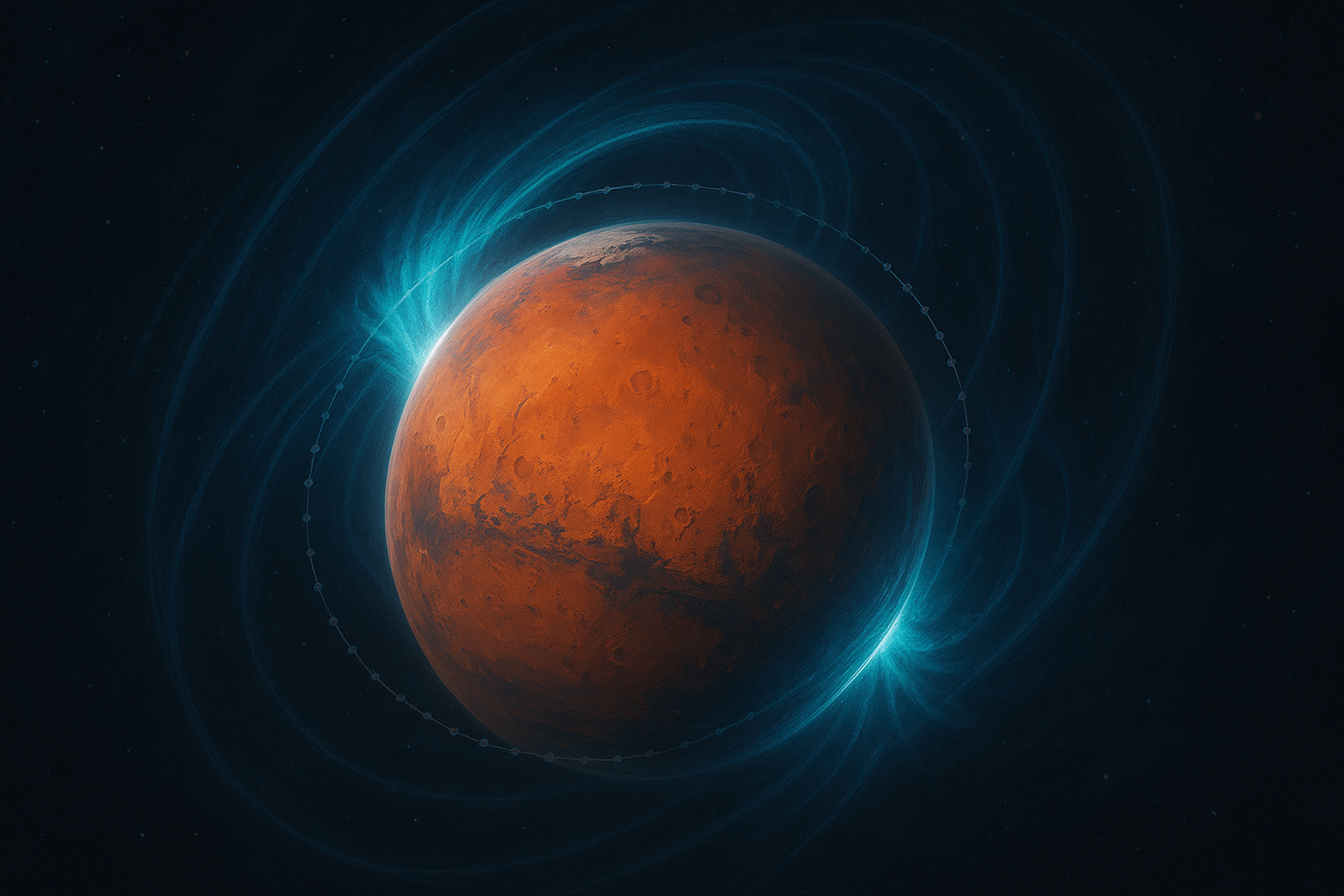
The plan?
Use Mars's own moon, Phobos, as a raw material source. Particle accelerators would ionize matter from the moon's surface and fire it into a stream along Phobos's orbit, creating a massive ring of flowing plasma, a plasma torus. This planetary-scale electrical current would generate a protective magnetic field.
To keep the beam from just dissipating, a series of orbital "kicker" stations would be needed to nudge the particles along. The power requirements for this are, to use a technical term, ludicrous, on the order of joules just to establish the field, demanding mature fusion reactors or energy sources we can barely dream of.
Part 3: Just Add Water
For Mars, the good news is that it has a lot of water ice locked in its polar caps and subsurface, potentially enough to form a global ocean hundreds of meters deep if you could melt it all.
The warming methods above would do most of that work.
For a bone-dry world like Venus, or if Mars needs a top-up, the only solution is the interplanetary delivery service. This involves the delicate art of nudging ice-rich comets or asteroids from the outer solar system onto a collision course with your target planet.
It's messy, unpredictable, and risks accidentally sterilizing the planet you're trying to fix, but it's undeniably spectacular.
These wildly different solutions highlight a core tension in terraforming philosophy: do you work with what you have, using in-situ resources, or do you resort to the brute-force importation of materials from elsewhere? While ISRU approaches like manufacturing nanorods from Martian dust are clever, most studies conclude that full terraforming is impossible without a massive influx of imported materials, turning the project from a planetary challenge into a solar-system-wide industrial enterprise.
The Biological Gambit: Unleash the Microscopic Minions
Once you've physically beaten the planet into a state that won't immediately disintegrate organic molecules, it's time to hand things over to biology. This is the pivot from geoengineering to ecopoiesis: the deliberate creation of a self-sustaining ecosystem from scratch.

You can't just plant an oak tree on a sterile, toxic rock. You need to send in the vanguard, the shock troops of life: extremophiles. These are organisms that find Earth's most inhospitable places to be rather quaint. Your starter pack would include:
- Deinococcus radiodurans: Affectionately nicknamed "Conan the Bacterium," this microbe can withstand insane levels of radiation, cold, and vacuum. Its primary job would be to detoxify the oxidant-rich Martian soil.
- Cyanobacteria: These are the real heroes of the story. Billions of years ago, these photosynthetic blue-green algae were responsible for pumping Earth's primordial atmosphere full of oxygen, an event known as the Great Oxygenation. The plan is to have them do it again, converting the thick CO2 atmospheres we've engineered into breathable air. While Mars is cold and dim, recent discoveries have found that some species, like Chroococcidiopsis thermalis, can perform photosynthesis using far-red light, well beyond the previously assumed "red limit," making them perfect for the weak Martian sunlight.
- Lichens and Lithoautotrophs: These "rock-eaters" would be the first to colonize the barren landscape, breaking down rock, creating the first hints of organic soil, and fixing essential elements like nitrogen.
Of course, we wouldn't just send off-the-shelf microbes.
The real power lies in synthetic biology. Agencies like DARPA are already funding the development of tools like "Google Maps for genomes" to rapidly engineer organisms with bespoke traits. The goal is to create designer life for a designer world: microbes engineered to reduce toxic perchlorates in Martian soil, cyanobacteria modified to be hyper-efficient at oxygen production and nitrogen fixation, and organisms that combine the radiation resistance of D. radiodurans with the photosynthetic power of algae.
This reveals that ecopoiesis is not a single event but a carefully orchestrated ecological succession. First come the detoxifiers and soil-makers to prepare the ground. Only then can the primary oxygen-producers be deployed on a mass scale to begin the long, slow work of atmospheric conversion. It's a plan to compress billions of years of Earth's biological history into a few frantic millennia.
The "Good Enough" Approach: Why Build a Planet When You Can Build a Dome?
Let's be honest.
Full terraforming is a project for the ages.
If you want a habitable zip code sometime this side of the next ice age, you might consider a more pragmatic, if less romantic, approach.
The first step down this path is paraterraforming, or the "Worldhouse" concept. Instead of changing the whole planet, you just build a roof over a chunk of it. Start with a domed crater, then connect it to another, and another, until you have a vast, contiguous area under a transparent membrane supported by the pressure of a breathable atmosphere inside.
It's faster, cheaper, and provides an immediate place to live, but one good meteor strike could lead to a very bad day for everyone under the roof.
An even more audacious idea has been proposed for Venus: forget the surface entirely.
A 2022 paper by Alex R. Howe outlines a plan for "Cloud Continents". The concept leverages the fact that at an altitude of about 50 km in Venus's atmosphere, the temperature and pressure are surprisingly Earth-like. The proposal is to build a vast, floating artificial surface made of interlocking tiles of carbon nanomaterials (manufactured from atmospheric CO2) and held aloft by the planet's abundant nitrogen as a lifting gas.
This shell would trap the hellish lower atmosphere below, while a new, breathable one is engineered on top, creating a platform for floating cities and ecosystems.
This approach represents a fundamental philosophical shift: from adapting the planet to us, to simply building an architectural bubble of "us" on top of the planet.
The Hangover: The Staggering Cost and Glacial Timescales
It's time for a splash of cold, hard reality.
The price tag for these planetary renovation projects is, to be gentle, astronomical. Forget billions; analysts toss around figures in the hundreds of trillions of dollars. The energy required would demand a civilization running on mature fusion power or solar arrays the size of continents.
And then there's the timeline.
This is not a project that fits neatly into a five-year plan. It's a project on a geological scale.
Table 2: The Thousand-Year Plan (And Then Some)
| Phase | Key Objective | Proposed Method(s) | Estimated Timescale |
|---|---|---|---|
| 0: Setup | Exploration, robotic factories, power grid | Survey missions, ISRU development | 50-100 years |
| 1: Warming | Raise global temp above freezing | Orbital mirrors, GHG factories, nanorods | ~100 years |
| 2: Ecopoiesis | First water, soil creation | Introduce engineered microbes, lichens | 200-600 years |
| 3: Oxygenation | Create a breathable atmosphere | Widespread cyanobacteria, plants | 100,000+ years |
| 4: Complex Life | Introduce animals, establish ecosystem | N/A | After Phase 3 |
The "quick" part, warming Mars, could take a century or two.
The real wait is for oxygen. Using biology to convert a planet's atmosphere is a slow, laborious process. Realistic estimates put the timeline for a breathable Martian atmosphere at over 100,000 years. No government or corporation operates on a 100,000-year schedule.
A project of this magnitude cannot be justified by any conventional economic or political model; it requires a motivation that is almost religious in its scope, a deep philosophical commitment to the future of life itself.
And that forces us to ask the most important question of all.
The Buzzkill Section: A Frank Conversation About Interplanetary Vandalism
So, we've established that we could, in a theoretical, multi-trillion-dollar, hundred-millennia sort of way, do this.
Now for the philosophy majors in the back to ruin the party by asking: should we?
The debate often boils down to three competing value systems. First is the anthropocentric view, championed by figures like Robert Zubrin of the Mars Society. This perspective sees terraforming as humanity's manifest destiny, a "profound vindication of the divine nature of the human spirit".
It is our nature to expand, to create, and to bring life to barren worlds.
Failure to do so would be a "betrayal of our responsibility as members of the community of life itself".
Opposing this is the biocentric view, most famously articulated by Carl Sagan: "If there is life on Mars, I believe we should do nothing with Mars. Mars then belongs to the Martians, even if the Martians are only microbes". This argument holds that any indigenous life, no matter how simple, has an intrinsic right to exist without our interference. Terraforming would be an act of cosmic genocide, wiping out a unique evolutionary path before we even had a chance to study it.
This is the ethical underpinning of our current Planetary Protection policies, which aim to prevent both forward and backward contamination.
Finally, there is the preservationist argument, which holds that a world has value even if it's completely sterile.
Ethicists like Paul York and Ian Stoner argue that planets like Mars are unique objects of immense scientific and aesthetic value. To terraform Mars would be an act of scientific vandalism, erasing billions of years of geological history forever. It would also be an act of aesthetic vandalism.
Science fiction author Kim Stanley Robinson, whose Mars trilogy is a deep dive into these ethics, has a character argue that beauty exists only in the human mind, and that adding life only enhances it. Yet Robinson himself has said that to irrigate Death Valley would be a "travesty".
Why should the stark, alien beauty of Mars be any different? To pave it over is to display a profound "aesthetic insensitivity" and, ultimately, hubris.
The argument is that a species that can't even manage its own home has no business re-engineering another.
Final Thoughts from Your Humble Planet-Building Correspondent
The journey from science fiction dream to engineering blueprint is a wild one.
We have theoretical pathways involving planet-sized sunshades, artificial magnetospheres powered by moons, and armies of genetically engineered super-microbes. We have candidate worlds, one frozen and barren, the other a runaway greenhouse inferno.
Thirty years ago, this was all impossible.
Today, with advances in launch capability and synthetic biology, it is merely ridiculously, prohibitively, ludicrously difficult. The technology is slowly catching up to our ambition.
The real question is whether our wisdom can catch up to our power.
Is the drive to terraform a noble quest to propagate the precious seed of life throughout the cosmos?
Or is it the ultimate expression of a species that would rather spend unimaginable fortunes to build a new house than clean up the one it's already trashing? Are we destined to be the universe's gardeners, or its most ambitious and destructive landlords?
The answer will define our future, both on this world and any other we dare to touch.
Solis Supra Omnia!